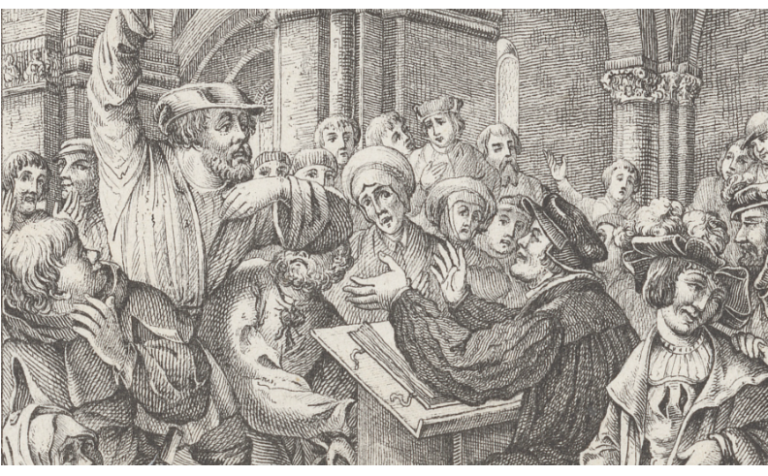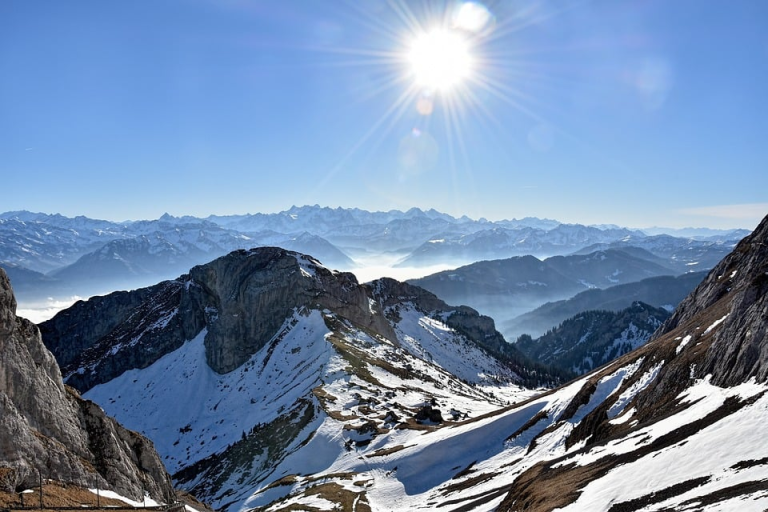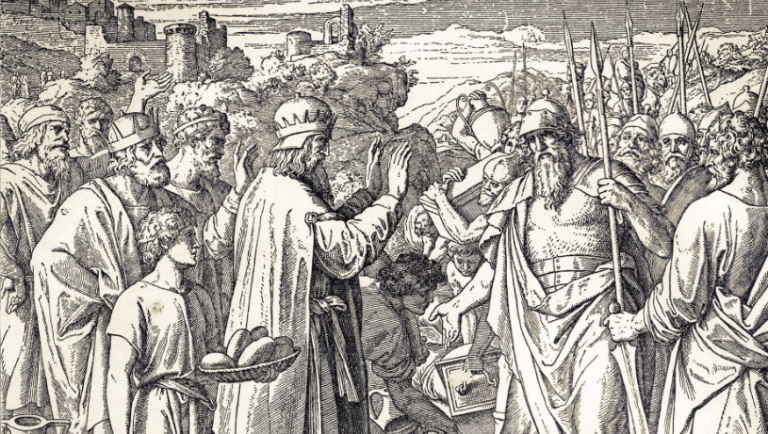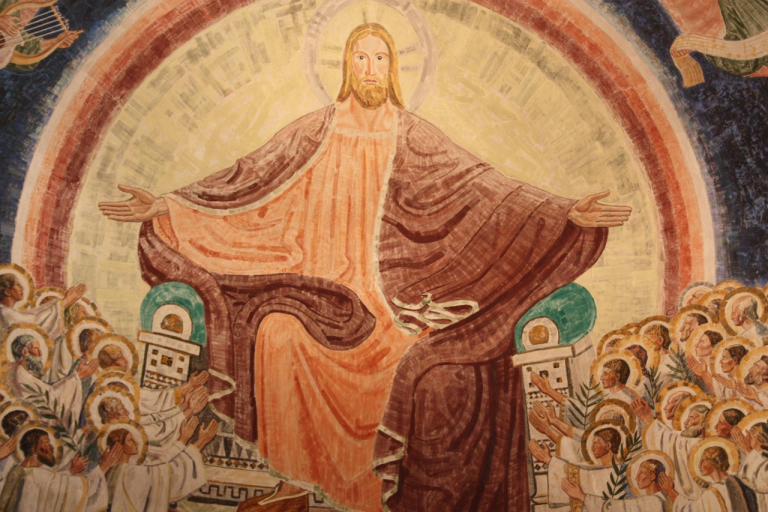Echoes of Holy Saturday in the Old Testament

Holy Saturday is a significant time in the Christian faith, and it has many parallels with events and stories found in the Old Testament.
Just as in the story of Joseph in Genesis, where his brothers and the Gentile authorities intended evil, but God turned it into good, so too on Holy Saturday, what seemed like a defeat with Jesus’ death was actually part of God’s plan for redemption. Jesus’ sacrifice on the cross was a turning point, much like Joseph’s rise to power in Egypt after his unjust imprisonment.
Holy Saturday is similar to the crossing of the Red Sea in Exodus. When the Israelites crossed the Red Sea, they were led out of bondage into a new life. Jesus, on Holy Saturday, went before his people through the waters of death, guiding them from the slavery of sin towards new life. His journey through death was a path – clearing act, just as Moses led the Israelites through the parted sea.
In Leviticus, the scapegoat was sent into the wilderness after atonement for sin was made. Jesus, after making atonement for sin at the cross, went outside the camp and into the darkness of Sheol on our behalf and ahead of us, much like the scapegoat. He took on the burden of our sins and faced the consequences in the realm of the dead.
The wilderness wanderings in Numbers are echoed in Holy Saturday. The Israelites were led by the Spirit through the trackless wilderness, and Jesus leads us through the valley of the shadow of death. He is our guide in the most difficult and seemingly hopeless times, just as the Spirit guided the Israelites during their arduous journey.
Deuteronomy is like Holy Saturday in that it looks back at the exodus and forward to the conquest. Similarly, Holy Saturday reminds us of what Jesus has already accomplished at the cross to defeat God’s enemies and looks ahead to his final victory in the resurrection. It’s a time of reflection on past victories and anticipation of future glory.
In the conquest in Joshua, Jesus is like the one who drives out the giants in the land of the dead, namely Death and Hades. By doing so, these forces can no longer tempt and test God’s people. Jesus’ power over death gives us the assurance that we are protected from the ultimate threats.
The story in Judges, where the oppressors’ power was broken so that God’s people could have rest, is paralleled on Holy Saturday. Jesus breaks the power of our oppressors, not just for a limited time like in Judges (40 or 80 years), but for eternity. He ensures that we can have eternal rest from the tyranny of sin and death.
The story of the ark in the temple of Dagon in Samuel shows how the ark, when taken into the enemy’s stronghold, ultimately destroyed the enemy’s power. Jesus, when seemingly taken by the enemy into the stronghold of death, destroyed the power of the “strongman” and liberated his people from oppression. His presence in the realm of death led to the defeat of our spiritual oppressors.
On Holy Saturday, Jesus is like Elijah on Mt. Carmel in Kings. Elijah showed that only God had power, even when it seemed otherwise. Jesus, on Holy Saturday, went to the “throne of the enemy” (the realm of death) and, through what may seem like foolish means, demonstrated that Death has no real power. It is only the incarnate YHWH, Jesus, who has the ultimate power.
Holy Saturday is the fulfillment of Isaiah 9:2, where “The people who have walked in darkness have seen a great light, those who dwelt in a land of deep darkness, on them has light shined.” Jesus’ presence in the darkness of death is the light that brings hope and salvation to those who were in the darkness of sin and facing eternal separation from God.
Jeremiah 4:23 speaks of the judgment of de – creation, but Holy Saturday begins the reversal of that. Jesus entered the chaotic waters of the void of death, changed it, broke open its gates, and brought light and life to those who were waiting for him. He turned the curse of death into a passageway to life.
The wheels of fire in Ezekiel represent God’s presence with his people during their exile. Holy Saturday is like this, as Jesus goes before and with his people into the “exile” of death, reminding them that he and they will one day return to the land of the living. His presence gives us hope during the darkest times.
Jonah’s time in the belly of the fish in the Book of the Twelve is similar to Holy Saturday. Just as Israel and the nations were saved through the death, burial, and resurrection of a Hebrew prophet (Jonah), so too are we saved through the death, burial, and resurrection of Jesus. His sacrifice and victory over death are the means of our salvation.
The movement from Psalm 22 to Psalm 23 is reflected in Holy Saturday. The wise king in Psalm 22 who suffered on behalf of his people lost his life, but in Psalm 23, he walks in the valley of the shadow of death, with the assurance that God will restore his soul. Jesus, who suffered and died, is on the cusp of restoration and new life, just as the king in the psalms.
In Job 41:1 – 2, God’s power over the Leviathan is described. Jesus, on Holy Saturday, is like the one who has drawn out the Leviathan of Death. He used his humanity, his perfectly righteous life, his atoning death, and his divinity to subdue Death, just as God subdued the powerful Leviathan.
The wise royal son in Proverbs enters Lady Folly’s house but doesn’t partake in her ways. Jesus, on Holy Saturday, followed the path to Sheol but only to bring his people out with him. He didn’t succumb to the temptations of death but instead rescued us from its grasp.
The book of Ruth tells the story of a kinsman – redeemer. Jesus, as our kinsman – redeemer, entered the “famine and darkness of the exile of death” to rescue his bride, the church, and restore her to the land of the living. His love and sacrifice are like that of the kinsman – redeemer in Ruth.
The marriage procession in Song of Solomon is echoed in Holy Saturday. Jesus comes out of the wilderness of death, fragrant with myrrh and frankincense, to marry his bride, the church. His victory over death is a step towards the ultimate union with his people.
Ecclesiastes reminds us that life is fleeting and death is certain, even for the Son of God. But Jesus, in dying, has defeated and destroyed Death forever. Holy Saturday is a reminder of this victory, and it calls us to fear the LORD and keep his commandments.
In Lamentations, the saints cried out in the valley of the shadow of death, asking “How long, O LORD?” On Holy Saturday, they see their Redeemer and hope in his impending resurrection, which is a sign of their own future resurrection. It gives them hope in the midst of despair.
Esther’s story shows that even when God’s presence isn’t seen or mentioned in hopeless circumstances, he is still working for our good. Holy Saturday is like this, as Jesus is at work even when his presence may seem hidden in the darkness of death. His plan is still unfolding for our salvation.
Daniel in the lions’ den was in a seemingly hopeless situation, sealed in the place of darkness with God’s enemies. But Jesus, like Daniel, is in the presence of YHWH and claims victory over those who seek to destroy him. His victory over death is certain, despite the seemingly dire circumstances.
The migrations in Ezra – Nehemiah show that before God’s people enter their promised rest, they must be led from bondage to freedom. Jesus, on Holy Saturday, leads us from the bondage of sin to freedom by crossing through the waters of death in a new exodus. He is our leader in the journey to eternal rest.
The end of Chronicles speaks of a decree and the anticipation of a rebuilt temple and a restored king. Holy Saturday is similar, as Christ’s decree “It is finished” has been made, but we wait for the reality of the rebuilt temple (our restored relationship with God) and the restored king (Jesus’ resurrection).
Let us pray with the words from The Book of Common Prayer:
“O God, Creator of heaven and earth: Grant that, as the crucified body of your dear Son was laid in the tomb and rested on this holy Sabbath, so may we await with him the coming of the third day, and rise with him to newness of life; who now lives and reigns with you and the Holy Spirit, one God, for ever and ever. Amen.”





